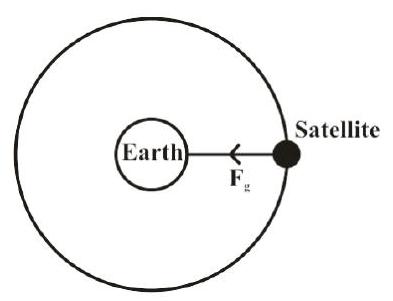138733
A satellite is moving in a circular orbit at a certain height above the earth's surface. It takes $5.26 \times 10^{3} \mathrm{~s}$ to complete one revolution with a centripetal acceleration equal to $9.32 \mathrm{~m} / \mathrm{s}^{2}$. The height of satellite orbiting above the earth is-
(Earth's radius $=6.37 \times 10^{6} \mathrm{~m}$ )
138733
A satellite is moving in a circular orbit at a certain height above the earth's surface. It takes $5.26 \times 10^{3} \mathrm{~s}$ to complete one revolution with a centripetal acceleration equal to $9.32 \mathrm{~m} / \mathrm{s}^{2}$. The height of satellite orbiting above the earth is-
(Earth's radius $=6.37 \times 10^{6} \mathrm{~m}$ )
138733
A satellite is moving in a circular orbit at a certain height above the earth's surface. It takes $5.26 \times 10^{3} \mathrm{~s}$ to complete one revolution with a centripetal acceleration equal to $9.32 \mathrm{~m} / \mathrm{s}^{2}$. The height of satellite orbiting above the earth is-
(Earth's radius $=6.37 \times 10^{6} \mathrm{~m}$ )
138733
A satellite is moving in a circular orbit at a certain height above the earth's surface. It takes $5.26 \times 10^{3} \mathrm{~s}$ to complete one revolution with a centripetal acceleration equal to $9.32 \mathrm{~m} / \mathrm{s}^{2}$. The height of satellite orbiting above the earth is-
(Earth's radius $=6.37 \times 10^{6} \mathrm{~m}$ )

